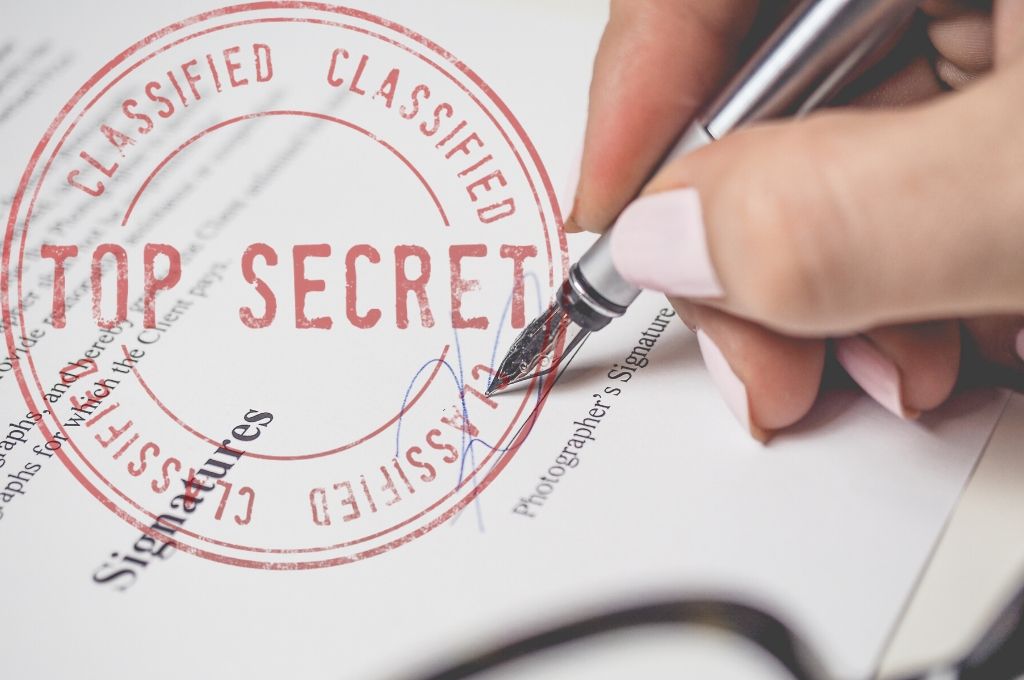It often happens that when arriving at an innovative solution, entrepreneurs opt to outsource tasks associated with prototype development, additional tests, improvement or adjustment of the solution to the company’s needs, and even preparatory works prior to manufacture. To this end, they
Entrepreneurs and innovators have become well aware of the need to sign non-disclosure agreements (NDAs) when they share sensitive information with third parties. However, many of them still mistakenly believe that the content of such an agreement is not too complicated and all they have to do is to copy well-sounding provisions from template agreements available on the Internet. This is a mistake that can have serious consequences, which may include depriving the invention of legal protection, ultimately leading to costly and lengthy disputes.
Confidentiality as the protection of novelty
However, keeping information about the invention confidential is important in view of the patent protection requirements for technical solutions provided for in the Act of 30 June 2000 on the Industrial Property Law – a prerequisite of novelty. The invention is considered to be novel when it is not part of the prior art. Prior art is deemed to be everything that, before the date when the priority for obtaining a patent is determined, has been made known to the public by means of written or oral description, application, exhibition, or as disclosed otherwise. The doctrine and case-law are dominated by the view that making the invention known to an identified (closed) circle of persons, in particular those bound by the obligation of professional secrecy, is not regarded as making the invention known to the general public.
To sum up, providing information about a new solution to individuals, a narrow circle of people bound by a confidentiality agreement, or employees bound by the “professional” confidentiality requirement, does not result in the loss of novelty of the invention if it is not made known to the public. The invention is disclosed only when it might have been made known to an indeterminate circle of people (Judgement of the Supreme Administrative Court of 15/06/2016, file no. II GSK 2854/14).
The information remains undisclosed to the public where there exists an express or implied confidentiality agreement. The commitment to keep the information obtained confidential may arise from an agreement, a provision of law (e.g. professional secrecy) or a relationship of confidence, e.g. in relation to a proxy or a member of the management board (see A. Michalak, Ochrona tajemnicy przedsiębiorstwa, p. 53 et seq.). A confidentiality agreement does not have to be made in a written form (Decision of the EPO BA of 23/7/1993, T-0830/90, Secrecy Agreement), although it is strongly recommended that such an agreement be concluded in writing for evidential purposes.
In addition, the provisions do not exclude the possibility for a patent to be granted for the invention when its disclosure has occurred not earlier than six months before the date of filing a patent application with the patent office and has been caused by an evident abuse in relation to the applicant or his legal predecessor (the so-called grace period). This means that disclosure of the invention to the public made with “an evident abuse in relation to the applicant or his legal predecessor” does not destroy the novelty of the invention.
Non-disclosure agreement must be tailor-made
Nowadays in business, entrepreneurs more and more often enter into non-disclosure agreements. However, it is hard to escape the impression that they have no sufficient knowledge of the said legal requirements and the agreements are made without due care, simply by copying provisions, e.g. from the Internet, without taking into account the circumstances of a specific situation.
The major problem lies in precisely specifying the subject matter and scope of the trade secret and how to maintain it. Most often, the parties rather broadly describe that the NDA covers, among others, all technical, technological, economic, financial, and organizational information. In practice, too general provisions make it difficult to comply with the agreement. As a result, both parties start to treat their commitments with indulgence. It is most often the case when confidentiality clauses are included in a framework cooperation agreement which also governs a number of other much more specific mutual obligations.
Regardless of the subject matter of the agreement, its content should indicate security requirements to be met when communicating confidential information, the required methods to collect, process, and store such information, as well as the tools to be used in the process. The information should only be available to the persons involved in the fulfillment of obligations arising from the subject matter of cooperation between the parties. Such persons should be obliged to keep specifically defined information confidential and not to use it for their own purposes or in the interests of third parties. Those participating in a given project must be aware that describing their current activities and professional achievements at scientific conferences or via social media constitutes a disclosure that is very likely to make it impossible to obtain patent rights on the grounds of lack of novelty. The agreement must emphasize that the recipient of confidential information knows that the disclosure of confidential information may expose the entrusting party to harm.
Risk persists over years
The determining of the novelty of the solution is one of the major tasks of the Patent Office as part of the procedure intended to examine the patentability of an invention covered by a patent application. At the same time, it should be noted that once a patent has been granted it is still possible to claim at a later date that the solution lacks novelty in the patent revocation procedure.
In practice, those most interested in depriving the patent holder of patent protection are his competitors. Nevertheless, it is not uncommon for trading partners to seek to deprive the patent holder of a legitimate monopoly in connection with the patent held to free themselves from contractual obligations. Should they have evidence that the invention has been disclosed on the date preceding the filing date, e.g. a defective non-disclosure agreement signed prior to the filing of a patent application with the patent office, they have a chance to have the patent revoked.
A careless approach to the drawing up of NDA may result to a situation in which effective charges are filed that the invention has been disclosed in the manner destroying its novelty. Therefore, it is worth paying sufficient attention to the content of the non-disclosure agreement and considering the engagement of professionals to draft it, while bearing in mind that ambiguous wording of non-disclosure agreements does not sufficiently protect the object of the invention.



